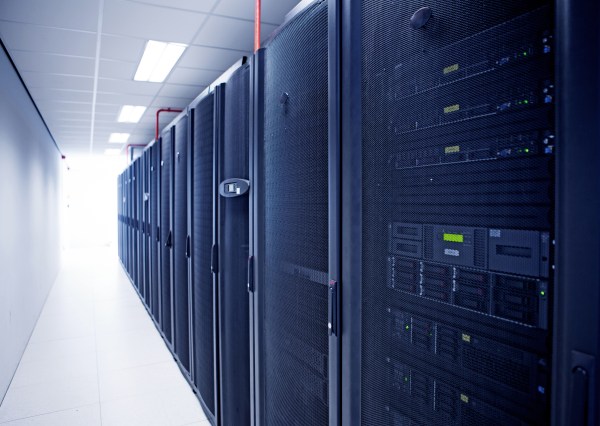Modern data centers contain a lot of IT equipment. Furthermore, this IT equipment tends to be in constant, heavy use. This means that data centers typically generate a lot of heat. Managing this heat effectively is vital not just to their performance and sustainability but to their safety. With that in mind, here is an overview of state-of-the-art cooling technologies in data centers.
Air-based cooling solutions
Here are the five main air-based state-of-the-art cooling technologies in data centers.
Hot aisle/cold aisle containment
Hot aisle/cold aisle containment involves segregating the data center space into alternating hot and cold aisles using physical barriers or enclosures. Cold aisle containment directs cool air directly to the front of server racks, while hot aisle containment collects and removes hot exhaust air from the rear of the racks. This approach minimizes air mixing, reduces bypass airflow, and improves cooling efficiency.
Variable-speed fans
Variable-speed fans adjust their rotational speed based on cooling demands, optimizing airflow while minimizing energy consumption. These fans dynamically respond to changes in temperature and workload, adjusting their speed to maintain optimal airflow and cooling conditions. By operating at lower speeds when cooling demands are lower, variable-speed fans reduce energy consumption compared to fixed-speed fans.
Air-side economizers
Air-side economizers leverage ambient outdoor air to provide cooling for data centers, particularly in regions with favorable climate conditions. During cooler periods, such as at night or during winter months, outdoor air is drawn into the data center and used to cool the facility directly, bypassing mechanical cooling systems.
Airflow optimization software
Airflow optimization software analyzes data center airflow patterns and adjusts fan speeds, air distribution, and cooling settings in real-time to maintain optimal conditions. By optimizing airflow management and cooling efficiency, this software maximizes the effectiveness of air-based cooling systems while minimizing energy consumption. It identifies and resolves airflow inefficiencies, such as airflow recirculation and hot spots, to ensure consistent cooling performance.
Free cooling systems
Free cooling systems utilize external sources of cool air, such as ambient outdoor air to supplement or replace mechanical cooling systems. These systems operate by circulating the cool external air through heat exchangers or cooling coils to absorb heat from the data center environment. By harnessing natural cooling resources, free cooling systems reduce the energy consumption associated with traditional refrigeration-based cooling methods.
Liquid-based cooling solutions
Here are the five main liquid-based state-of-the-art cooling technologies in data centers.
Direct-to-chip liquid cooling
Direct-to-chip liquid cooling involves circulating liquid coolant directly to the heat-generating components, such as CPUs and GPUs, within servers or IT equipment. The coolant absorbs heat from the components, carrying it away to external heat exchangers or cooling towers, where the heat is dissipated into the surrounding environment. This approach provides more efficient heat transfer compared to air cooling, allowing for higher cooling capacities and improved thermal performance.
Immersion cooling
Immersion cooling submerges entire server racks or IT equipment modules in a bath of dielectric liquid coolant. The liquid coolant surrounds the components, absorbing heat directly from their surfaces. The heated coolant is then circulated to external heat exchangers or cooling systems, where the heat is dissipated, and the cooled coolant is recirculated back into the immersion tanks.
Immersion cooling offers superior heat dissipation capabilities and can accommodate high-power-density configurations, making it ideal for cooling high-performance computing (HPC) clusters and specialized applications.
Rear-door liquid cooling
Rear-door liquid cooling integrates liquid-cooled heat exchangers or cold plates into the rear doors of server racks. Coolant is circulated through the heat exchangers, absorbing heat from the equipment, before being transported to external cooling systems for heat dissipation. Rear-door liquid cooling enables efficient heat removal without extensive modifications to existing server infrastructure, offering a cost-effective and space-efficient solution for cooling high-density server deployments.
Cold plate cooling
Cold plate cooling involves attaching liquid-cooled plates directly to heat-generating components, such as CPUs and GPUs, within servers or IT equipment. The liquid coolant absorbs heat from the components, which is then circulated to external heat exchangers or cooling systems for dissipation. Cold plate cooling provides efficient and localized cooling, allowing for precise temperature control and thermal management of individual components.
Chilled water cooling systems
Chilled water cooling systems circulate chilled water through a network of pipes or coils to absorb heat from the data center environment. The warm water is then pumped to external heat exchangers or cooling towers, where the heat is dissipated, and the cooled water is recirculated back into the system. Chilled water cooling systems offer efficient and scalable cooling solutions for data centers of all sizes, enabling precise temperature control and thermal management.







